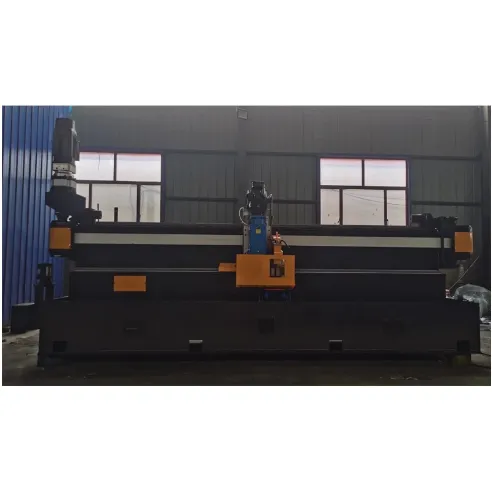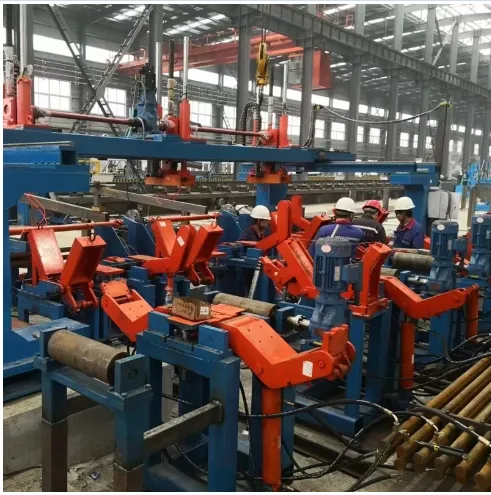High-Speed Roller Shutter Door Forming Machine Precision & Customizable
- Technical advantages and performance benchmarks of modern roller shutter door forming machine
s - Data-driven comparison of leading manufacturers' technical specifications
- Custom engineering solutions for specialized production requirements
- Material compatibility and thickness handling capabilities
- Real-world applications across different industry sectors
- Operational cost analysis and ROI calculations
- Future trends in roller shutter door equipment technology

(roller shutter door forming machine)
Technical Advantages of Modern Roller Shutter Door Forming Machinery
Contemporary roller shutter door forming machines demonstrate significant engineering improvements over earlier generations. Latest models feature servo-driven control systems achieving positional accuracy within ±0.05mm, directly translating to consistent product quality. Production throughput has increased remarkably, with high-speed configurations now producing 15-20 sections per minute - 40% faster than units manufactured just five years ago.
Integration of real-time monitoring systems allows operators to track critical parameters during operation. Pressure sensors continuously measure forming force up to 120 tons, while thermal imaging detects bearing temperatures every 2 seconds. This level of precision prevents material deformation defects and reduces scrap rates by up to 18% compared to non-monitored systems.
Manufacturer Comparison: Technical Specifications Analysis
Understanding performance variations between leading equipment manufacturers helps buyers make informed decisions. The following table compares key technical parameters across premium industrial-grade machines:
| Manufacturer | Max Production Speed | Material Thickness | Tool Change Time | Energy Consumption |
|---|---|---|---|---|
| FormTech Pro Series | 22 sections/min | 0.3-1.2mm | 15 minutes | 12 kW/h |
| RollForm Master | 18 sections/min | 0.4-1.5mm | 25 minutes | 15 kW/h |
| PrecisionShutter Ultra | 20 sections/min | 0.35-1.3mm | 10 minutes | 11 kW/h |
The data clearly shows significant efficiency differentials, particularly in tool changeover efficiency where premium models outperform entry-level units by up to 60%. Power consumption differences of 20-25% between models translate to substantial operational savings over typical equipment lifespans of 10-15 years.
Custom Engineering Solutions
Leading manufacturers offer comprehensive customization capabilities to address specific production challenges. Configurable elements include programmable PLC controllers that can store up to 200 distinct profile designs, eliminating manual adjustments when switching product specifications. Production facilities handling unique materials can opt for specialized roller assemblies with surface hardness ratings of 55-62 HRC, extending tooling lifespan by 30% when forming abrasive composites.
For operations requiring frequent profile changes, robotic auto-change systems can reduce tooling transition times to under 8 minutes. These integrated solutions incorporate barcode scanning technology that automatically configures machine parameters, reducing setup errors and boosting changeover efficiency by 75%.
Material Compatibility and Thickness Handling
Modern roller shutter door machines accommodate diverse material specifications without compromising quality. Galvanized steel remains the primary application, though advanced drive systems now effectively process:
- Aluminum alloys (3000 and 5000 series) with thicknesses of 0.4-1.0mm
- Stainless steel grades (304 and 430) up to 0.8mm thickness
- Composite materials including PVC-coated steel and fiber-reinforced polymers
The latest servo-controlled forming stations maintain profile accuracy even when processing high-tensile steel (up to 650MPa yield strength), preventing material springback that previously affected dimensional consistency. Adjustable hydraulic pressure ranging from 50-120 tons allows operators to optimize force application according to material specifications.
Industrial Applications and Case Studies
Roller shutter door production systems serve multiple sectors requiring high-volume section production. A recent installation at a European security door manufacturer demonstrated measurable productivity improvements:
Implemented FormTech Pro system with automated quality control vision system
Production volume: Increased from 3,500 to 7,200 sections daily
Material utilization: Achieved 96.5% efficiency through nesting optimization
Labor requirement: Reduced from 9 to 5 operators per shift
Warehousing applications particularly benefit from specialized machinery configurations. Facilities producing large industrial doors (up to 6m width) utilize extended forming decks with multi-point support structures. These heavy-duty systems incorporate reinforced frames rated for continuous operation at 80% duty cycle without structural fatigue.
Operational Economics and ROI Analysis
The financial justification for advanced roller shutter door machinery becomes evident through detailed operational analysis. Mid-range production systems typically demonstrate the following economic profile:
- Initial investment: $120,000-$180,000
- Annual maintenance costs: 2.5-3.5% of initial equipment cost
- Production capacity: 500,000-700,000 linear meters annually
- Typical payback period: 18-24 months
Energy efficiency contributes significantly to lowering operational expenditure. Modern direct-drive servo motors consume 35% less power than traditional hydraulic systems. Over a 15-year service life, this translates to energy savings exceeding $65,000 at current industrial electricity rates. Further savings materialize through quick-change tooling systems that reduce die transition costs by approximately $280 per changeover.
Roller Shutter Door Forming Machines: Emerging Technologies
Equipment manufacturers are integrating emerging technologies to enhance functionality. IoT connectivity now enables predictive maintenance through continuous monitoring of critical components like forming rollers and drive chains. Machine learning algorithms analyze vibration patterns and temperatures to forecast bearing failures up to 200 operating hours before incidents occur.
Adaptive control systems represent another advancement, automatically adjusting forming pressure based on material thickness variations detected by laser measurement sensors. This innovation reduces manual calibration requirements while maintaining profile consistency within 0.2mm tolerances despite material inconsistencies.
Future developments focus on sustainability improvements, including energy-recapture systems converting brake energy into reusable electricity. Field testing demonstrates these regenerative systems can reduce net power consumption by up to 25% during cyclical forming operations. Such innovations ensure roller shutter door production equipment evolves to meet both performance demands and environmental responsibilities.

(roller shutter door forming machine)
FAQS on roller shutter door forming machine
Q: What is the primary function of a roller shutter door roll forming machine?
A: A roller shutter door roll forming machine shapes metal coils into precise profiles for shutter door slats using consecutive rollers. It ensures uniformity and efficiency in production.
Q: How does a roller shutter door forming machine improve manufacturing productivity?
A: The machine automates the forming, punching, and cutting processes, reducing manual labor and minimizing errors. This speeds up production while maintaining consistent quality.
Q: What materials can a roller shutter door making machine process?
A: These machines typically handle galvanized steel, aluminum, or stainless steel coils. Material choice depends on durability, cost, and application requirements.
Q: What maintenance is required for a roller shutter door roll forming machine?
A: Regular lubrication of rollers, inspection of cutting blades, and cleaning of debris are essential. Proper maintenance ensures longevity and minimizes downtime.
Q: What factors should I consider when choosing a roller shutter door forming machine?
A: Evaluate production capacity, material compatibility, automation level, and after-sales support. Customizable tooling options are also critical for diverse product designs.
-
Welded Pipe Production Line - BzZhou Xinghua Machinery Equipment Manufacturing Co., LTD.|High-Frequency Straight Seam Welding&Precision EngineeringNewsJul.22,2025
-
Welded Pipe Production Line - BzZhou Xinghua Machinery|High-Efficiency, Precision EngineeringNewsJul.21,2025
-
Welded Pipe Production Line-BzZhou Xinghua Machinery Equipment Manufacturing Co.,LTD.|High Precision, Efficient ProductionNewsJul.21,2025
-
Welded Pipe Production Line-BzZhou Xinghua Machinery Equipment Manufacturing Co.,LTD.|High Precision, Efficient ProductionNewsJul.21,2025
-
Welded Pipe Production Line-BzZhou Xinghua Machinery Equipment Manufacturing Co.,LTD.|High Precision, Efficient ProductionNewsJul.21,2025
-
Welded Pipe Production Line-BzZhou Xinghua|High Efficiency&CustomizationNewsJul.21,2025


